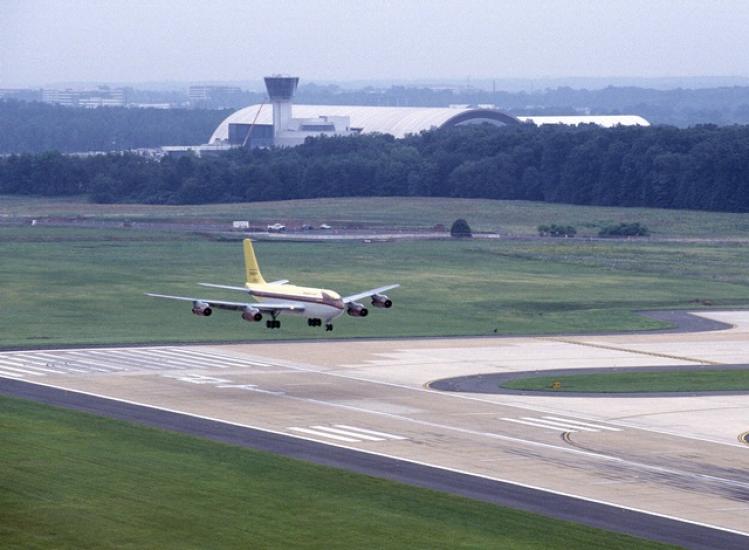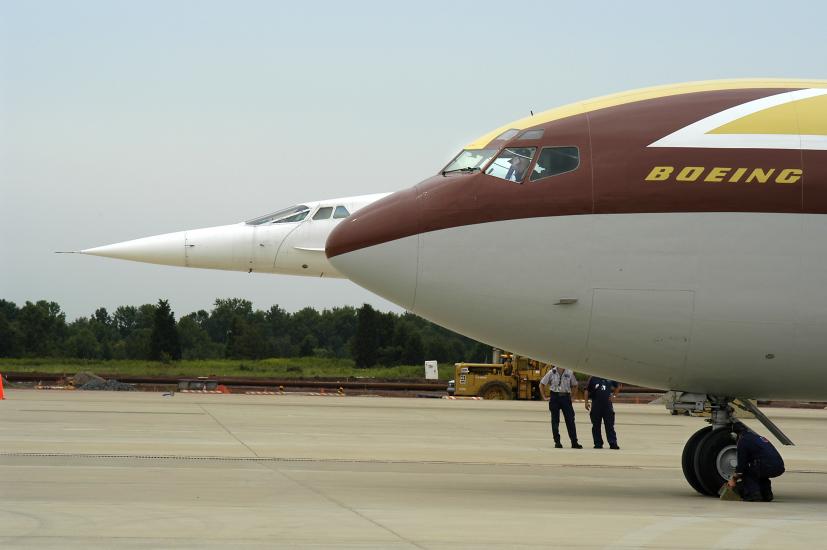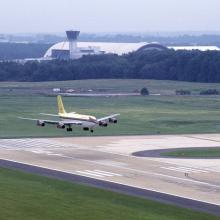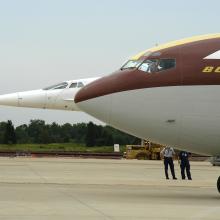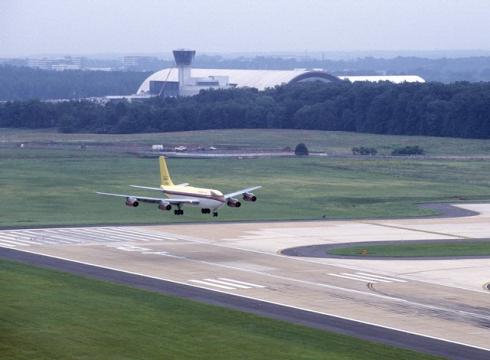
Media Inquiries
Public Inquiries
The Boeing 707, which first flew in 1954 as a prototype called the 367-80, was America's first commercially successful jet airliner and revolutionized commercial air transportation. This prototype, nicknamed the Dash 80, arrives at Washington Dulles International Airport in Virginia on Aug. 27. The artifact, in the collection of the Smithsonian's National Air and Space Museum since Boeing donated it in 1972, will be exhibited at the museum's new companion facility, the Steven F. Udvar-Hazy Center, opening Dec. 15.
The Dash 80 is flying in from Seattle, where employees of Boeing, the aircraft's manufacturer, have been restoring it.
The Dash 80 is one of scores of historically significant artifacts being flown in from other cities or removed from storage to go into the National Air and Space Museum's new facility. The move-in process began last March and will continue through opening day and beyond.
With jet engines and swept wings, the Dash 80 combined aerodynamic and structural features of the B-47 and B-52 with the cabin capacity of the larger C-97 transport. On July 15, 1954, the Dash 80 marked the 38th anniversary of the Boeing Company by making its maiden flight. The airplane was clearly a winner with a speed 100 miles per hour faster than the de Havilland Comet and significantly larger. It also had a range of more than 3,500 miles vs. 1,750 miles for the Comet.
The Dash 80 became the prototype for the KC-135 Stratotanker, the first jet aerial tanker, which was bought by the Air Force. A total of 732 KC-135s were eventually built. Boeing then focused efforts on selling the Dash 80 to the airline industry, which quickly saw the benefits of the new jet transport.
Besides its fame as America's first jet airliner, the Dash 80 became a legend in Boeing's hometown of Seattle when test pilot Alvin "Tex" Johnston turned a simple fly-over into a double barrel-roll over Lake Washington during the 1955 hydroplane races. The daring feat was viewed by thousands of astonished spectators and dozens of shocked Boeing executives, and vividly displayed the superior strength and performance of the new jet.
Pan American World Airways ordered 20 Boeing 707s, as the Dash 80 was known after its official launch. At Pan American's request the design was widened to accommodate six- across seating and lengthened an additional 10 feet. The Boeing Company ultimately produced 1,010 707s.
Until it was donated to the National Air and Space Museum, the Dash 80 soldiered on as a highly successful experimental aircraft. It tested numerous advanced systems, many of which were incorporated into later jet designs.
More than 200 aircraft are ultimately destined for the Udvar-Hazy Center's aviation hangar, which is 10-stories high and the length of three football fields - enough space to hold the museum's flagship building on the National Mall inside with room to spare.
